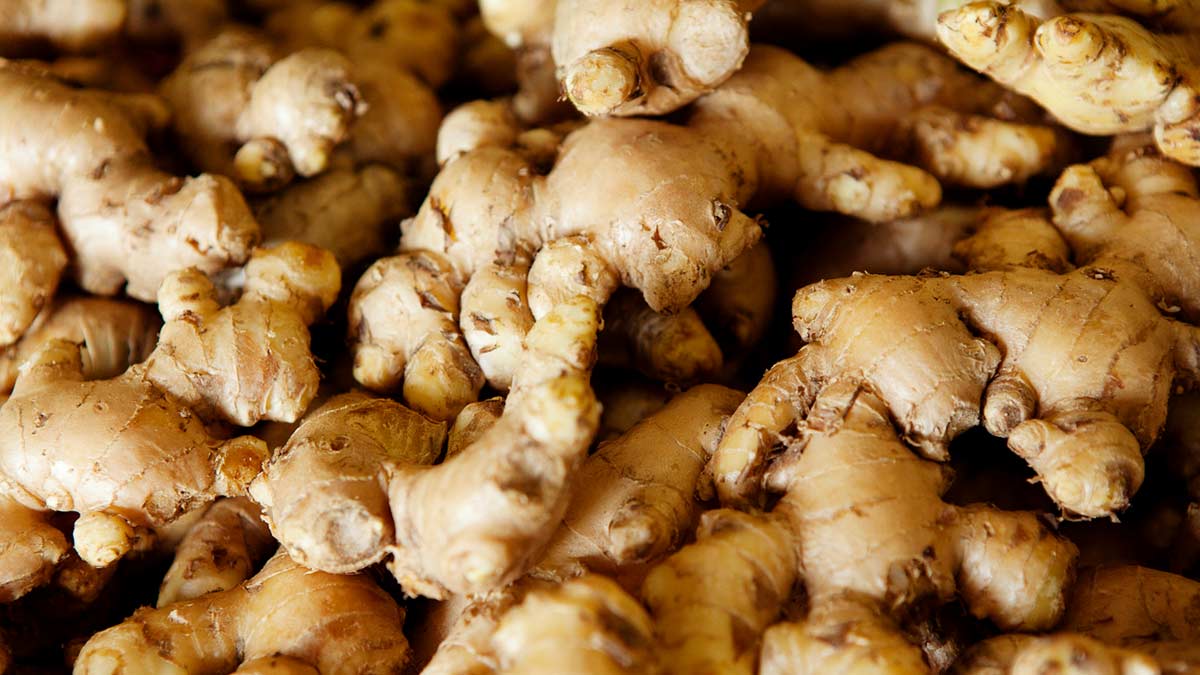During recent visits to Australia, I belatedly and unexpectedly developed a liking for ginger beer – both alcoholic and non-alcoholic. One brand of the non-alcoholic variety claims to contain three different types of ginger. This brought back memories of the Pharmacog lab in Shrewsbury Road and having to identify whole forms of various medicinal plants including the three main varieties of ginger (Jamaican, Cochin from India and Africa). Of course, in those days the main pharmaceutical use of ginger was as a flavouring agent in extemporaneous formulations. Its more widespread conventional medicinal use came later, even though it and other members of the ginger family have been used for centuries in Asian traditional medicine systems.
Originally ginger became valued in western medicine for its anti-motion sickness effects. Indeed, that is the main indication recognised by the EMA, which includes a well-established use, ie based on clinical trial evidence, as a herbal medicinal product for the prevention of nausea and vomiting in motion sickness. Some formulations are also recognised as traditional herbal medicinal products for the symptomatic relief of motion sickness and also for the relief of bloating and flatulence. But that is not the end of the story.
Motion sickness
A 2022 paper in the American Journal of Clinical Nutrition described an umbrella review of 24 separate systematic reviews of orally consumed ginger and human health. It found that the strongest evidence was for the anti-emetic effects in pregnant women; analgesic effects in osteoarthritis (OA) and in glycaemic control. The studies on motion sickness were too heterogenous to allow for review. There were statistically significant effects on BP, weight management, dysmenorrhea, post-operative nausea and blood lipid profile. There was no evidence that ginger was effective in chemotherapy-induced nausea and vomiting. The authors urged that ginger be used with caution in patients with platelet disorders because it reduces platelet aggregation. As heartburn is a common side effect, patients with oesophageal reflux should avoid its use.
A 2023 paper in Phytotherapy Research described a systematic review and meta-analysis of clinical trials on the effect of ginger on human serum lipid profile. The review included 16 RCTs on cholesterol and 17 on triglyceride levels and found that ginger significantly reduced total cholesterol and triglyceride levels but had no significant effect on either HDL-C or LDL-C levels. The effects on triglycerides were greater in obese and diabetic patients.
Going on the available evidence it would appear that the European Medicines Agency (EMA) has taken a highly restrictive view of the clinical benefits of ginger. It has also adopted a similar niggardly approach to two other members of the ginger family, namely turmeric and Javanese turmeric. According to the EMA, the only recognised indication for both of these Curcuma species is as a traditional herbal medicinal product for the symptomatic treatment of digestive disturbances. However, the evidence base points to a much more useful remedy.
Usual cop-out
A 2022 systematic review and meta-analysis of 29 RCTs involving 2,396 participants and five different types of arthritis; ankylosing spondylitis; rheumatoid; osteo; juvenile idiopathic and gout/hyperuricaemia. Both turmeric and curcumin, isolated from it, improved the severity of inflammation and pain levels in these patients and were shown to be safe. In the case of patients with OA, the review found that those taking curcumin may be less likely to initiate pain medication and more likely to discontinue existing pain relief. The authors then invoked the usual cop-out by calling for more studies. A more recent meta-analysis appeared in the Journal of Ethnopharmacology in January of this year and involved 23 studies from seven countries and 2,175 patients with knee osteoarthritis. Compared to placebo, curcumin significantly reduced a VAS pain score, the total WOMAC score and the use of rescue medication. Patients taking curcumin had a reduced incidence of adverse reactions compared to those using NSAIDs.
It would appear that the EMA has taken a highly restrictive view of the clinical benefits of ginger. It has also adopted a similar niggardly approach to two other members of the ginger family, namely turmeric and Javanese turmeric
Much of the current research interest in curcumin centres on its value as an adjuvant in cancer chemotherapy. A 2023 paper in Phytotherapy Research reviewed the advances in research on various cancers, highlighting the notable effects against head and neck, pancreatic, colorectal, breast and prostate cancers based on in vivo and in vitro studies, however there are significant solubility and bioavailability issues to be overcome. Approaches under way include the development of synthetic curcuminoids or using absorption enhancers such as piperine from black pepper. There is also a heavy focus on using advanced drug delivery systems, especially nanotechnology. While numerous clinical trials are under way there is as yet little human data.
There are other strings to the turmeric bow including an effect on obesity. A systematic review and meta-analysis in Phytotherapy Research (2023) reported on the effects of either curcumin or turmeric on obesity indicators and adipokines in adults. Based on the 60 RCTs involving 3,691 individuals, it was found that supplementation significantly reduced body weight, BMI, waist circumference, percentage body fat and anorectic leptin levels while increasing the anti-inflammatory and insulin-sensitising adinopectin. The effects were only seen in patients with diabetes, dyslipidaemia or Non-Alcoholic Fatty Liver Disease but not in healthy individuals.
There is another plant from the ginger family widely used as a spice in Malaysian, Thai and Indonesian cooking (notably in classic Nasi Goreng). It is called galangal and the main producer country is Indonesia but the plant Alpinia galanga grows in any tropical climate. Among the chemical constituents are a flavonoid, inevitably called galangin and an essential oil said to be used in Chartreuse liqueur. Pharmacological studies reviewed in the Journal of Ethnopharmacology in 2022 show anti-inflammatory, anti-cancer, anti-psoriasis, anti-allergic and neuroprotective effects. Galangin can also be isolated from ginger, propolis, saffron, and a raft of soft fruits and other plants. According to a 2023 paper in Phytotherapy Research, pharmacological studies showed that it has anti-inflammatory, anti-oxidative stress, anti-fibrosis and anti-hypertensive effects; research is ongoing into its role in neurodegenerative diseases, RA, OA, osteoporosis, skin disease and cancer. Unfortunately, the research so far has involved only in vitro and in vivo studies and clinical trials are lacking.
I have no doubt that we are going to hear more about not only galangal but also about further benefits of turmeric and ginger, highlighting the value of the ginger family as a spice and a medicine.







